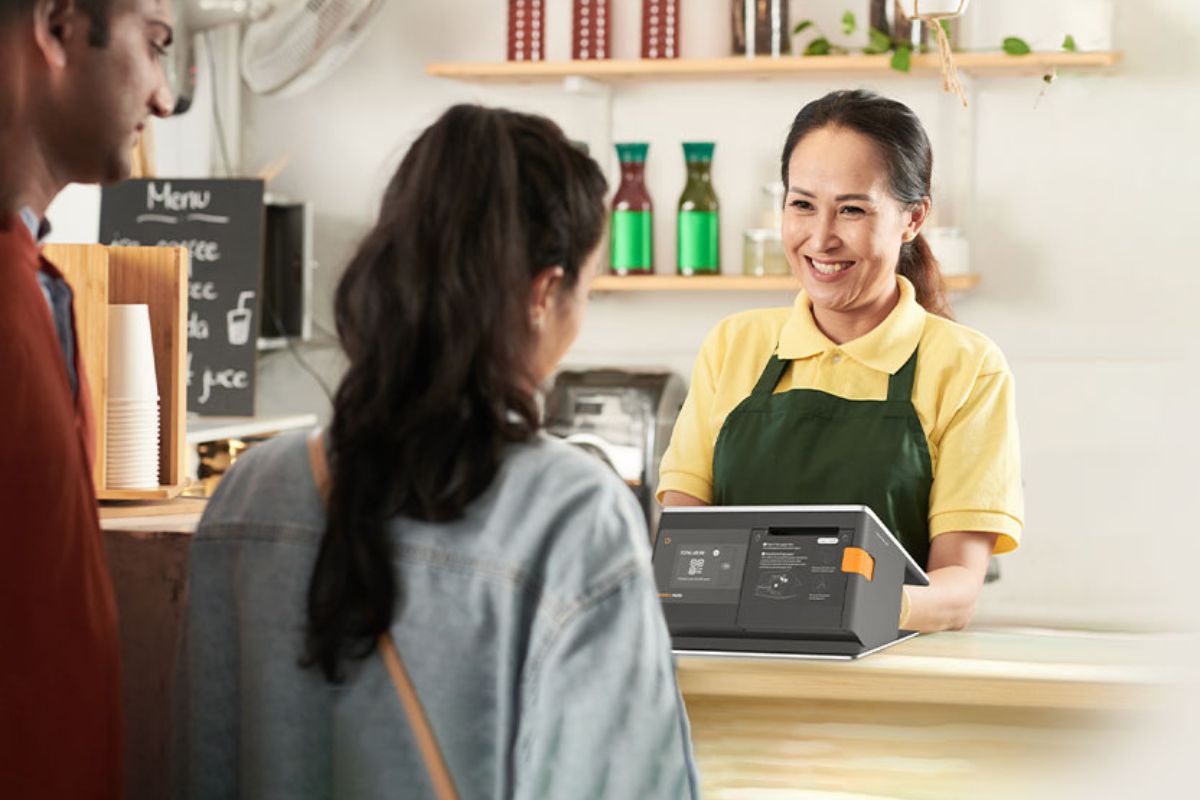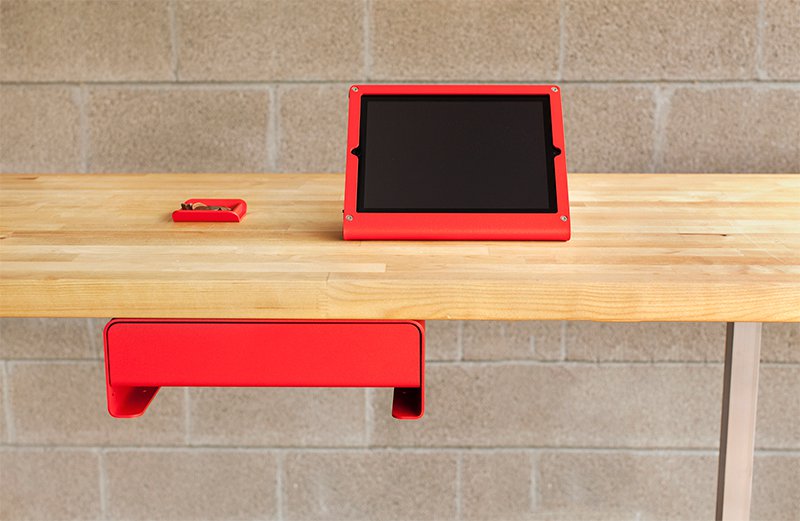It’s time to finally answer the most commonly asked questions:
- What exactly is a POS system?
- How is it different from a cash register?
- What features does a POS system have?
First things first, POS stands for ‘Point of Sale’.
A POS system handles the entire checkout process from inputting the purchase into the system to the payment transaction.
But how is it different from a cash register?
A POS system can do everything a cash register does BUT it also includes many different features that make doing business a lot easier and the checkout process more seamless.
Think of it as a more advanced and modern version of a cash register!
It even includes back-office management features such as sales, stock, and staff data analytics.
Having a good and efficient POS system can go a long way in making your business operations run smoothly.
What features does a POS system have?
When you’re looking for a new POS system, the number of choices out there can overwhelm you pretty quickly.
Each POS system comes at different prices and with a variety of special features.
How do you determine which features, out of the many that are out there, are most suitable and needed for your business needs?
Luckily for you, this post will help walk you through the 27 key features that you should be looking for in your POS system.
In-store management

1. Product Catalogue
If you have a variety of products on offer, or even multiple colours and sizes, a POS system will help keep track of this in its product catalogue.
Each product variation will have its own price and SKU (stock-keeping unit) attached to it.
You can easily organise and filter products by category, type, price and more! This will help you find and manage your products quickly.
2. Table layout for F&B merchants
For F&B businesses, a POS system must have the table layout feature. This feature should allow you to create table arrangements according to the layout of your restaurant.
By doing this, your employees can put in orders on the POS under the appropriate tables.
This will create a better experience of ordering and serving for both the customer and the employee.
3. Save, hold, split, and merge customer orders
For the F&B industry, in particular, managing orders and customers can be difficult with all their different needs.
A POS system can relieve some of these difficulties by:
- Saving and holding orders: In case your customers initiate a checkout but suddenly change their mind and aren’t actually ready to pay (perhaps they saw something else that caught their eye and wants to check it out). You can easily access their saved orders to avoid re-entering them again.
- Splitting the bill: If you have a group of customers who want to split the bill by paying individually, you can easily split orders from the POS system.
- Merging orders: If there are two separate orders that you want to combine, you can easily do that by merging them together
These are tools that you should look for in a POS system as they save a lot of time and you don’t have to create a new order each time you cater to your customer’s needs.
Payment methods

4. Multiple secure payment methods
Look for a POS system that accepts all types of payment methods to offer total flexibility to your customers.
This ranges from coins, cash, debit/credit cards, mobile payments, QR code payments, and e-wallets.
You should also ensure that these payments are stored, processed, and transmitted securely to keep customer’s information safe.
5. Returns and Refunds
A POS system should be able to process refunds easily without inconveniencing customers by asking for their card again.
Returns can also be easily processed with a few clicks as all the data should be stored in the system, just like StoreHub’s POS system.
6. Store Credit
With a POS system, you can improve customer relationship management by rewarding customers with store credits to retain their loyalty. You should be able to determine how much store credit is assigned to each purchase or item.
For example, you can specify RM10 = 1 Store Credit. So for every RM10 spent, customers would get 1 store credit.
The customer can then collect this credit and use it on their next purchase.
Customer Loyalty

7. Keep customers loyal to your brand
A POS system should let you create customer profiles and track their buying behaviour. This will help you learn more about your customers and their shopping habits.
With this, you can make suggestions that are relevant to their tastes and continuously offer them products or services tailored to their needs.
You can even find their contact information and order history with a few simple clicks instead of browsing for ages.
8. Set promotions
A POS system can help you set automatic discounts on selected products that are applied automatically at checkout.
You can run a variety of different promotions such as:
- Discount (by amount or percentage) on total bill
- Combo/Package bundle
- Buy X get Y for free
- Discount on existing prices/percentage discounts (%)
- Offer free shipping for your ecommerce business
- And more!
You should be able to do this and apply it to all your stores (if you have multiple outlets). This saves tons of time and effort of having to set it up manually and at each store individually.
If you’re searching for the perfect loyalty programme for your business, look no further! StoreHub’s fully integrated and powerful loyalty system makes it easier than ever before to reward your customers and keep them coming back.
9. Keep customers updated via SMS Marketing
Using a POS system and your existing customer database on it, you can send out bulk SMSes to your customers.
You can send them updates on your latest promotions, new announcements, and even personalised deals!
Keeping in touch with your customers, in this way, is a lot cheaper than reaching out to new customers!
And the best part is, you can easily and quickly do it with StoreHub Engage – no extra tool or marketing expert needed!
10. Customisable receipts
Like a cash register, a POS system will be able to print out customer receipts.
With your printed receipts, you can personalise them to include the customer’s name, a customised message and your business logo.
Data Analysis and Reports

11. Generate transaction reports, sales report and even identify the best selling item
With a POS system, you should be able to automatically generate and export your transactions report, sales report, inventory report… basically, any report that you can think of!
These reports can help you identify any areas that need improvement and even identify your best selling item easily!
You can choose whether you want these reports to be based off hourly, daily or even monthly transaction/sales.
Without having to manually input data and creating these reports yourself, you can prioritise more important things for your business e.g. how you can maximise sales or marketing efforts.
12. Cloud-based, real-time reporting
Are there times when you’re not at the store but want to know how it’s doing?
A cloud-based POS, just like StoreHub, allows you to view your real-time sales performance anytime, anywhere. With the advanced cloud technology, it will allow you to access data as it’s happening!
It shows you today’s sales, total transactions, items sold, etc. You even get a quick overview of the data as a graph.
13. Offlince protection
What happens when your WiFi is down? Don’t worry! Your POS system should have an auto-offline mode where you can still run your store seamlessly without WiFi.
All you have to do is sync the data once your WiFi is back on!
Customer convenience

14. Customer-facing display
A POS system can be linked to a customer-facing display.
This means that a customer can watch the transaction happen on another screen that faces them. This allows customers to have higher transparency and makes it easier for them to point out any mistakes in the order being placed.
15. Set up and link your ecommerce store
Find a POS system that allows you to set up your own online store in just a few minutes with a user-friendly template.
Like StoreHub’s Webstore, it should also be integrated perfectly with your POS system so all the transactions are synced. This way, you’ll never oversell, know when to reorder, and easily fulfill your online orders.
With a single product catalogue, you can choose what to sell in-store, online, or both. This can be done all in one single system!
Inventory Management

16. Inventory Management
A POS system allows you to track and manage your stock. This is particularly helpful when you have multiple stock variants, such as style, size, and colour.
You can categorise your items with relevant custom labels to help find and track them better.
The system syncs up your sales and stock perfectly so that whenever a transaction is made, the appropriate level of stock will be deducted.
Composite inventory is another feature that has recently been developed in many POS systems. This helps products with different components.
For example, one cup of bubble tea has many different ingredients, and with a POS system, making a bubble tea transaction will deduct the necessary amount of milk, tea, and sugar from your current stock level.
17. Identify and move dead stock
A POS system helps you find out which items are underperforming to free up your cash flow.
There’s no need to count your stocks manually after each sales transaction.
This reduces human error and manages your inventory and stock at ease, all through the use of one platform.
18. Get automatic low-stock alerts
Your system should allow you to get notified immediately whenever your stocks are low.
19. View/transfer inventory across multiple stores
If you’re managing multiple stores, then having a POS that can share stock information across all your stores is a huge necessity!
Not only can you view your inventory levels per store, but you can also transfer it between stores easily!
Whenever one of your stores has insufficient stock levels, you can easily manage and move your supplies across stores.
20. Manage supplier relationships
A POS system lets you send or print purchase orders directly to your suppliers.
When your stocks are running low, you can easily order from your suppliers via email directly from your POS back office!
You can even set orders to be sent and purchased automatically when a stock reaches a certain level.
Employee management

21. User accounts and setting permission
You should look for a POS system that allows you, as a business owner, to limit employee access to certain functions and information.
All employees should be able to clock in/out but you can choose certain features and databases that they are allowed to access.
This will prevent any leakage or tampering with important information.
22. Staff timesheet
Instead of manually using a timesheet to track and manage your staff’s working hours, a POS system will do this for you! All they have to clock in/out whenever they sign into their shift.
23. Staff performance management
You can even use a POS system to monitor your staff’s performance to find out who your best-performing employee is. This is useful for motivating your staff via a reward system based on their total sales.
24. Track employee shifts
A POS system allows you to create multiple staff PINs, each with a secure PIN code unique to each employee. All orders and register activity is tracked by the staff PIN. This will help you identify and track down any suspicious activity.
Or if that’s not something that works for you and your team, you can utilise Face Capture which allows staff to take a photo on the POS when they arrive at work. This is automatically recorded and timestamped in your StoreHub BackOffice – ensuring that only the actual employee can clock in or out!
Support
25. Integrate with accounting software
Get a POS system that integrates with accounting software so you can automatically sync and analyse your financial data.
With the system transferring your sales data and handling all bookkeeping tasks for you, it saves you time and reduces human errors as you no longer need to manually enter data.
26. Onboarding training
Find a POS system that has a dedicated support team and provides onboarding training that’ll run you through how to properly use and get the most out of your POS system and back office.
A good onboarding experience will help you get set up and running in no time!
27. Free and automatic updates
Your POS system should have the latest software updates available for you to download at no extra cost!
It’s time to choose the right POS for your business!
Now that you’re aware of all the features that you need, you should check out StoreHub for an all-in-one POS system that can help your business grow!





Recent Comments